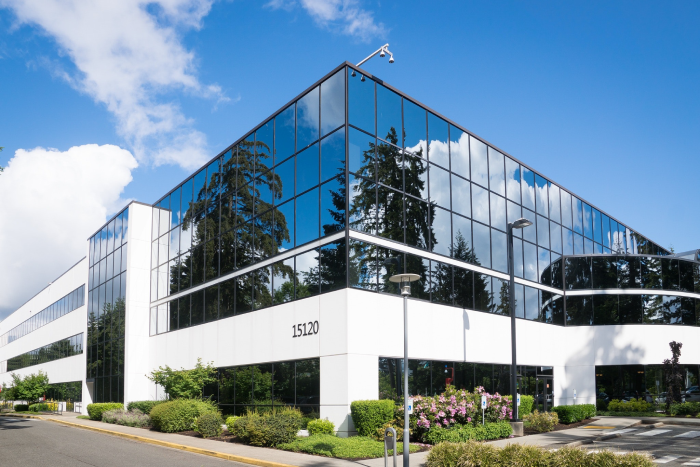Last Updated on January 22, 2025 by Alarm New England
In today’s increasingly interconnected world, security is paramount. Whether it’s safeguarding homes, businesses, public spaces, or critical infrastructure, the need for effective surveillance solutions has never been greater. Closed-circuit television (CCTV) surveillance has emerged as a powerful tool in this endeavor, providing a reliable means of monitoring and deterring security threats. In this article, we will delve into the world of CCTV surveillance, exploring its evolution, applications, benefits, and the role it plays in our modern society.
The Evolution of CCTV Surveillance
The origins of CCTV surveillance can be traced back to the early 1940s when the first closed-circuit television systems were developed for military and industrial purposes. These early systems were rudimentary compared to today’s sophisticated CCTV setups, consisting of bulky cameras and analog recording equipment.
Over the decades, significant advancements in technology have transformed CCTV surveillance into a highly efficient and versatile tool for security and surveillance. The transition from analog to digital technology marked a major milestone, enabling higher resolution, remote access, and enhanced storage capabilities. Today, modern CCTV systems leverage digital technology, artificial intelligence (AI), and cloud computing, providing an array of innovative features and capabilities.
Applications of CCTV Surveillance
- Home Security: CCTV cameras are increasingly common in residential settings. Homeowners use them to monitor their property, deter potential intruders, and gain peace of mind. These systems can be integrated with smartphones, allowing homeowners to access live feeds and receive alerts remotely.
- Business Security: Businesses of all sizes rely on CCTV surveillance to protect their assets, employees, and customers. Surveillance cameras help deter theft, monitor employee activities, and provide valuable evidence in case of incidents. Businesses often integrate access control and alarm systems with CCTV for comprehensive security.
- Public Safety: CCTV cameras are widely deployed in public spaces, such as streets, parks, and transportation hubs, to enhance public safety. They aid law enforcement in monitoring and responding to incidents, as well as provide evidence for investigations.
- Traffic Management: Traffic surveillance cameras are used to monitor road conditions, manage traffic flow, and enhance road safety. These cameras help in identifying traffic violations and monitoring congestion in real-time.
- Industrial and Critical Infrastructure: Industries and critical infrastructure, such as power plants and water treatment facilities, employ CCTV surveillance to protect against physical and cyber threats. These systems provide early detection of potential hazards and security breaches.
- Retail: Retail stores use CCTV cameras to prevent shoplifting, monitor customer behavior, and ensure employee safety. They also aid in analyzing customer traffic and improving store layouts.
Benefits of CCTV Surveillance
- Deterrence: The mere presence of visible CCTV cameras acts as a deterrent to potential criminals. Knowing that they are being monitored reduces the likelihood of illegal activities.
- Evidence Gathering: In the event of an incident, CCTV footage provides valuable evidence for investigations, insurance claims, and legal proceedings. High-definition cameras ensure clear and reliable recordings.
- Remote Monitoring: Modern CCTV systems allow users to access live feeds and recorded footage remotely via smartphones and computers. This feature provides real-time awareness and flexibility.
- Employee Productivity: In a business setting, CCTV surveillance can enhance employee productivity and discourage misconduct. It ensures that employees adhere to company policies and procedures.
- Cost-Effective Security: CCTV surveillance is a cost-effective security solution compared to hiring and maintaining a large security staff. It provides continuous monitoring 24/7 without breaks or fatigue.
- Improved Public Safety: In public spaces, CCTV surveillance contributes to public safety by deterring criminal behavior, enabling rapid response to emergencies, and assisting in disaster management.
The Role of Technology in Modern CCTV Surveillance
Modern CCTV cameras are equipped with high-definition capabilities, providing exceptional video quality that ensures clear and detailed footage, even in low-light conditions. This feature is crucial for accurate identification and the collection of valuable evidence.
Internet Protocol (IP) cameras have become the industry standard in contemporary CCTV surveillance. They offer scalability, remote access, and compatibility with existing network infrastructure, making them a versatile and efficient choice for surveillance systems.
Artificial intelligence and video analytics are reshaping the landscape of CCTV surveillance. AI-powered algorithms enable real-time detection and identification of objects, individuals, and events, enabling proactive responses to security threats.
Cloud-based CCTV systems have gained prominence, offering secure and scalable storage solutions. These systems grant easy access to footage from virtually anywhere with an internet connection, eliminating the need for on-site storage and simplifying data management.
The integration of CCTV systems with other security components, such as access control, alarms, and biometric authentication, creates a comprehensive security ecosystem. This integration enhances overall protection, providing a seamless and interconnected approach to security.
As CCTV technology continues to advance, concerns regarding privacy and data protection have garnered increased attention. To address these concerns, regulations and best practices are evolving to ensure responsible and ethical surveillance practices are followed.
Future Trends in CCTV Surveillance
CCTV surveillance continues to evolve, driven by technological advancements and changing security needs. Some notable future trends in CCTV surveillance include:
- Artificial Intelligence: AI will play an increasingly significant role in CCTV surveillance, enabling smarter and more automated monitoring. Facial recognition, object detection, and anomaly detection will become standard features.
- Edge Computing: Edge computing, where data processing occurs on the camera itself, will reduce latency and bandwidth usage. This allows for real-time analysis and faster response to security events.
- 5G Connectivity: The rollout of 5G networks will enable faster and more reliable data transmission, facilitating high-resolution video streaming and remote monitoring.
- IoT Integration: CCTV systems will integrate with the Internet of Things (IoT) devices, allowing for more comprehensive monitoring of smart homes and smart cities.
- Enhanced Cybersecurity: With the increasing digitization of CCTV systems, cybersecurity will become a top priority to protect against cyberattacks and data breaches.
- Green and Sustainable Solutions: Energy-efficient cameras and solar-powered CCTV systems will become more prevalent, aligning with sustainability goals.
CCTV surveillance has come a long way from its humble beginnings, transforming into a sophisticated and indispensable tool for security and surveillance in the modern world. Whether it’s safeguarding homes, businesses, public spaces, or critical infrastructure, CCTV systems provide the means to deter, detect, and respond to security threats effectively.
As technology continues to advance, the future of CCTV surveillance looks promising. Artificial intelligence, high-definition cameras, cloud storage, and IoT integration are just a few of the trends shaping the evolution of surveillance systems. While the benefits of CCTV surveillance are evident, it is essential to strike a balance between security and privacy, ensuring that these technologies are used responsibly and ethically. In doing so, we can create safer and more secure environments for individuals and communities alike.




